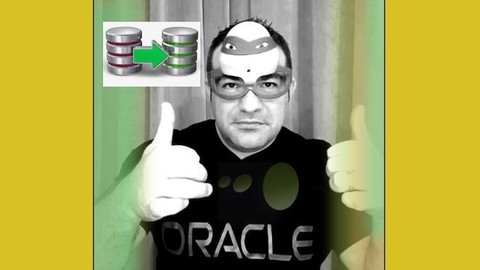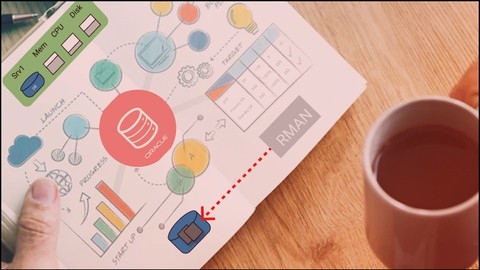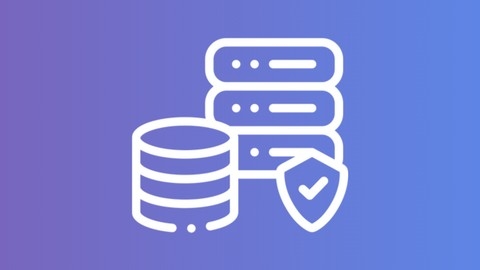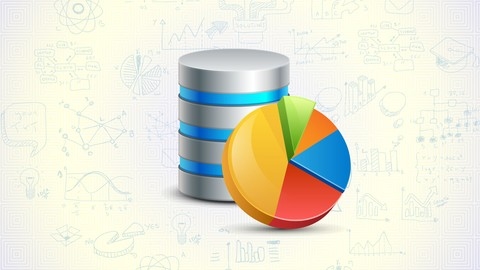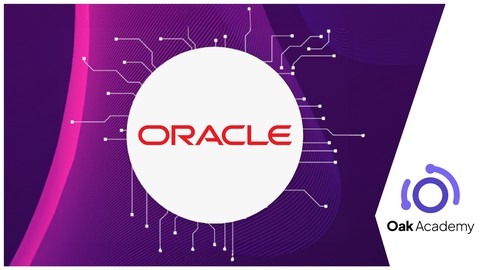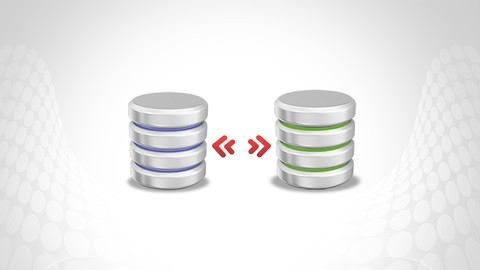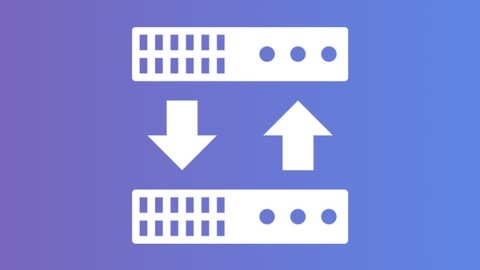Oracle is a robust and widely used database management system that powers countless organizations worldwide.
Mastering Oracle administration can open doors to exciting career opportunities as a Database Administrator (DBA), where you will be responsible for ensuring the smooth operation, security, and performance of critical databases.
Finding the right Oracle administration course on Udemy can be challenging, with many options available.
You’re likely searching for a program that covers the essential concepts, provides hands-on experience, and prepares you for real-world scenarios.
For the best overall Oracle administration course on Udemy, we recommend Oracle DBA 11g/12c - Database Administration for Junior DBA.
This comprehensive course provides a thorough foundation in Oracle database administration, guiding you from basic concepts to advanced topics.
It features hands-on labs that allow you to practice essential tasks like database installation, configuration, and management, ensuring you gain valuable practical skills.
This is just one of many excellent Oracle administration courses available on Udemy.
Keep reading to explore our full list of recommendations, categorized by skill level, specific topics, and career goals.
Oracle DBA 11g/12c - Database Administration for Junior DBA
You’ll start by understanding the fundamentals of databases, Oracle instances, and the differences between OLTP and OLAP databases.
From there, you’ll dive into the intricate details of Oracle’s architecture, including processes like Database Writer, Log Writer, Checkpoint, and more.
The memory architecture section will teach you about critical components like the Database Buffer Cache, Shared Pool, and REDO log buffer.
One of the course’s strengths is its hands-on approach.
You’ll gain practical experience with software installation on virtual machines, creating databases manually and using DBCA, managing tablespaces, and handling tasks like startup and shutdown.
The course also covers advanced topics like UNDO and REDO management, archival log mode, and user and privilege management.
Networking concepts are thoroughly explored, with demonstrations on listener and TNSNAMES configuration, as well as database links.
You’ll learn about the data dictionary, diagnostic data, and how to create incident packages for Oracle Support.
The backup and recovery section covers user-managed backups, RMAN backups, and recovery scenarios for control files and data files.
The course doesn’t stop there – it also covers materialized views, table partitioning techniques like range, list, hash, and composite partitioning, as well as interval partitioning for automatic partition creation.
You’ll even get to work on a project to solidify your learning.
Oracle Database Administration Workshop ( 12c and Higher)
You’ll gain comprehensive knowledge, starting from the basics and progressing to advanced topics.
With over 27 hours of high-definition video content, you’ll receive thorough training to become a highly skilled Oracle DBA.
The course begins by laying the foundation, covering Oracle database editions, instances, processes, and storage structures.
You’ll dive into DBA tasks, tools, and installation methods across different operating systems.
Hands-on labs guide you through installing Oracle on a virtual machine and mastering essential Linux commands.
Moving forward, you’ll learn about database startup, shutdown, and connections, exploring concepts like listeners, service names, and tnsnames.ora files.
The course equips you with querying skills to explore Oracle’s architecture using data dictionary views and dynamic performance views.
You’ll master managing database instances, from initialization parameters to automatic diagnostic repositories and alert logs.
Creating and administering pluggable databases (PDBs) is covered in-depth, including cloning, unplugging, and plugging operations.
Network configuration is another vital aspect, where you’ll learn to establish connections, create database links, and utilize tools like Oracle Net Configuration Assistant and Oracle Net Manager.
User security is a crucial topic, covering system and object privileges, roles, profiles, and password management best practices.
You’ll also gain expertise in creating and managing tablespaces, understanding storage concepts like segments, extents, and blocks, and optimizing free space utilization.
The course delves into undo data management, including transactions, undo retention periods, and automatic tuning.
Moving data is simplified through SQL*Loader, external tables, and data pump techniques.
Finally, backup and recovery concepts are explored, covering failure categories, redo logs, archived redo logs, and Oracle backup technologies.
You’ll practice enabling archivelog mode, configuring the fast recovery area, performing full backups, and point-in-time recovery for both the container database (CDB) and pluggable databases.
Complete Oracle Database Administration course (19C,21C)
The course starts with an introduction to Oracle database architecture, including memory structures, background processes, and the multitenant architecture.
You’ll learn how to access the database using tools like SQL*Plus, SQL Developer, SQLcl, and OEM.
Managing the database instance is covered in-depth, from initialization parameters and starting/stopping instances to creating and managing PDBs using techniques like cloning, refreshable clones, and unplugging/plugging.
Oracle Net Services is explained to help you understand network configuration.
User management, including creating users, granting privileges, roles, and authentication methods like TDE, is thoroughly covered.
The course dives into tablespace management, explaining general concepts, creation, alteration, OMF, and the crucial role of the UNDO tablespace for features like read-consistent queries and flashback.
Backup and recovery is a major focus, with RMAN taking center stage.
You’ll learn backup types, configurations, creating backups, backup strategies and scheduling.
Recovery scenarios like lost control files, redo logs, and complete/incomplete recovery are explored in detail, including PDB and CDB recovery.
Database maintenance tasks like patching, monitoring with scripts and EM, upgrading from 19c to 21c, and configuring Data Guard for high availability are all included.
Moving data is simplified with concepts around Data Pump, loading from CSV files using external tables and SQL Loader.
Real-world challenges like automating startup, investigating errors, and checking object growth are addressed.
You’ll even get exposure to the Oracle Cloud with Always Free ATP databases.
Practice questions from the 1Z0-082 certification exam are provided, ensuring you’re prepared for the exam.
Oracle 12c Data Guard Administration
You will learn about the key concepts and terminology related to Data Guard, such as protection modes, redo transport, and different types of standby databases.
The course starts by explaining the importance of high availability and introduces you to the Data Guard architecture.
You will then set up a practice lab environment with virtual machines (VMs) for both the primary and standby databases.
Once the lab is set up, you will install Oracle software on both the primary and standby VMs and create the primary database.
You will then learn how to configure a physical standby database, including setting up the listener, configuring redo transport, and verifying the standby configuration.
The course covers manual switchover and failover procedures, giving you practical experience in handling these scenarios.
You will also learn about snapshot standby and active Data Guard, which are advanced Data Guard configurations.
Additionally, you will explore the Oracle Data Guard Broker, a powerful tool that simplifies the management of Data Guard configurations.
You will learn how to configure the broker, perform switchovers and failovers using the broker, and enable Fast-Start Failover (FSFO) for automatic failover.
Finally, the course delves into logical standby databases, which are useful for offloading read-only workloads and performing rolling upgrades.
You will learn how to convert a physical standby to a logical standby and create objects in the logical standby database.
Throughout the course, you will work with essential components such as redo transport, standby databases, FSFO, the broker, listener, TNS, and primary and standby VMs, gaining hands-on experience with Oracle’s high availability solutions.
Oracle Database Administration for Absolute Beginners
You’ll start by learning the fundamentals of databases, including key concepts like tables, indexes, views, and database languages like SQL.
The course then dives into the specifics of Oracle databases, covering important topics like relational database management systems (RDBMS), primary keys, foreign keys, and data consistency.
One of the key strengths of this course is its hands-on approach.
You’ll get to install Oracle 12c on your Windows machine and learn how to use tools like SQL Developer and Enterprise Manager Express to interact with and manage your database.
The course covers essential tasks like connecting to the database, creating users and schemas, and performing basic operations like creating tables, inserting data, updating records, and deleting data.
It also covers more advanced topics like Oracle’s internal architecture, memory structures like the System Global Area (SGA) and Program Global Area (PGA), and background processes.
You’ll learn about Oracle’s backup and recovery mechanisms, as well as networking concepts like the listener, service names, and client-side networking.
Throughout the course, you’ll have the opportunity to reinforce your learning through a series of labs that simulate real-world scenarios.
These labs cover tasks like creating tablespaces, schemas, roles, and applying various SQL statements to manage data.
One of the standout features of this course is its focus on hands-on learning.
Instead of just presenting theoretical concepts, you’ll be guided through practical exercises that allow you to apply what you’ve learned in a real Oracle database environment.
This approach ensures that you not only understand the concepts but also gain valuable experience in working with Oracle databases.
Oracle Database Administrator DBA
You will start by learning how to install and set up Oracle Database on both Windows and Linux environments.
Once the setup is complete, you’ll dive into core database concepts like data, databases, and RDBMS (Relational Database Management System).
The course covers DDL (Data Definition Language) commands for creating and modifying database objects like tables, users, and tablespaces.
You’ll also learn DML (Data Manipulation Language) for inserting, updating, and deleting data, as well as TCL (Transaction Control Language) for managing transactions.
A significant portion is dedicated to retrieving and manipulating data using SQL.
You’ll master techniques like filtering, sorting, joining tables, and using subqueries and set operators.
The course teaches you how to leverage SQL’s power for reporting and analysis.
Moving on, you’ll explore schema objects like views, indexes, and synonyms, and learn how to manage them effectively using SQL Developer and data dictionary views.
User access control is another crucial aspect covered, ensuring you can secure your databases.
The syllabus also covers advanced topics like handling large data sets, performance tuning, and troubleshooting common errors.
You’ll gain insights into a DBA’s daily tasks, monthly maintenance routines, and useful scripts and tools like AWR, ASH, and OPatch.
Throughout the course, you’ll work on quizzes and a final project to reinforce your learning.
Oracle Database RAC Administration (12c and 19c)
The course provides comprehensive training on Oracle RAC (Real Application Clusters) database administration.
You will start by learning the fundamentals of Oracle RAC, including its architecture, advantages, and disadvantages.
Next, you’ll gain hands-on experience installing and creating an Oracle 12c R1 two-node RAC database through step-by-step practices.
The course covers essential administration tasks like enabling archivelog mode, configuring backups, and using RMAN for backup and recovery.
You’ll learn how to monitor and tune the RAC database using Oracle Enterprise Manager (EM) Database Express.
The course dives into global resource management, a crucial aspect of managing workloads in a RAC environment.
Enabling high availability features is a key focus area.
You’ll learn to manage dynamic database services, implement connection load balancing, configure Transparent Application Failover (TAF), and use Application Continuity to maintain service during planned outages.
The syllabus covers patching and upgrading RAC databases, including hands-on practices for applying patch set updates (PSUs) and upgrading to a newer Oracle version.
You’ll also learn about Oracle RAC One Node and how to create and manage a multitenant RAC database.
Policy-managed databases are covered in-depth, including creating server pools, associating services with pools, and using server categorization and cluster configuration policies.
The course introduces Oracle Flex Clusters and provides practices on adding and removing nodes from a RAC cluster.
Additionally, you’ll learn to create a physical standby RAC database from a primary RAC for disaster recovery.
The latest Oracle 19c RAC database creation is also included in the practices.
Oracle Database Data Guard Administration (12c and 19c)
You will start by learning the basics of Data Guard, including its architecture, different services, types of standby databases, and protection modes.
The course then dives into the practical aspects of creating physical and logical standby databases using SQL*Plus.
You’ll get hands-on experience with setting up a Data Guard configuration from scratch.
The use of the Data Guard Broker for managing the environment is also covered in detail.
Once you have the setup ready, you’ll learn how to monitor and manage physical and logical standby databases effectively.
This includes handling operations like redo apply, upgrading protection modes, and recovering from data corruption.
An important part of the course focuses on performing role transitions like switchover and failover between the primary and standby databases.
You’ll understand the processes involved and practice them using SQL*Plus, the Broker, and even enable features like Fast-Start Failover.
The course doesn’t stop there - it also covers advanced topics like Active Data Guard, Snapshot Standby Databases, client connectivity management, using RMAN in a Data Guard setup, and performing rolling upgrades with DBMS_ROLLING.
For Oracle 19c users, there are dedicated sections on creating a 19c Data Guard environment as well as using the Flashback Database feature in such setups.
The course even touches upon Data Guard in specialized scenarios like Multitenant Environments and RAC databases.
With its balanced mix of concepts and hands-on practices, you will learn to confidently implement, manage and troubleshoot Data Guard configurations in real-world environments.
Oracle 11g Dataguard Administration
You will learn about the components of Data Guard and the different types of standby databases it supports.
The course starts by introducing you to the concept of High Availability and its importance in enterprise environments.
It then dives into the key components of Data Guard, such as Physical Standby and Log Apply Service.
You will learn how to configure a Physical Standby database, including making the necessary changes to the production server and standby server parameters.
One of the key aspects covered is the process of cloning the production database and creating a Physical Standby environment.
The course will guide you through starting the Log Apply Service on the standby server, ensuring data synchronization between the primary and standby databases.
Troubleshooting is an essential skill for any DBA, and this course dedicates a section to troubleshooting Data Guard configurations.
You will learn how to verify your Data Guard setup and resolve common issues that may arise during shutdown and startup operations.
The course also covers the concept of Active Data Guard, which allows you to offload read-only workloads to the Physical Standby database, improving performance and resource utilization.
You will learn how to convert a Physical Standby to an Active Data Guard environment.
Additionally, the course includes a bonus lecture on upgrading from Oracle 11g to 12c using Data Guard and ASM (Automatic Storage Management).
This valuable addition will help you plan and execute a seamless database upgrade while maintaining high availability.
Oracle Database Multitenant Administration (12c to 19c)
The course covers the multitenant architecture in-depth, starting with an introduction to understanding the challenges it addresses and its core structure and benefits.
You’ll learn how to create and manage containers like CDBs and PDBs through hands-on practices, covering everything from creating them from scratch to cloning, plugging in, relocating, and refreshing PDBs.
The course dives into essential multitenant administration tasks like connectivity, services, security with common and local users, lockdown profiles, backup, recovery, flashback, and using the resource manager.
It also covers more advanced topics like managing applications and application containers, common objects, maintenance tasks, and new features in 18c and 19c like CDB fleet and PDB snapshot carousel.
You’ll get experience with tools like Data Pump utility and DBCA for PDB cloning and relocation.
The course is very comprehensive, guiding you through concepts and practices for all the key multitenant components like containers, services, security, backup/recovery, applications, and new features.
You’ll gain hands-on experience creating, configuring, and managing all aspects of a multitenant Oracle database environment.


